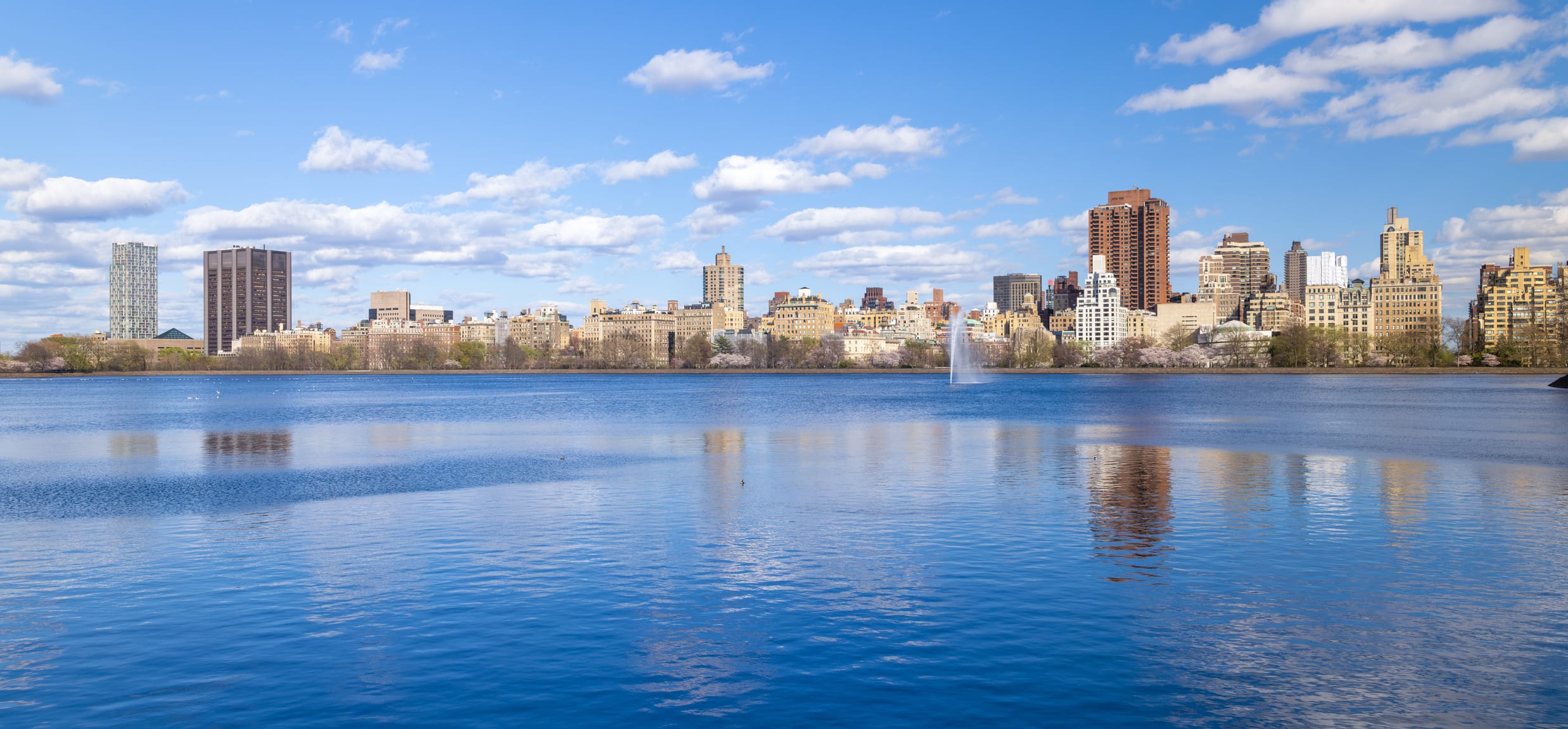Reservoir

The Reservoir is the largest water body in Central Park and one of its most popular destinations for running.
Be sure to look up as you walk along the allée of Kwanzan cherry trees in the landscape west of the Reservoir. Their vibrant, double-petaled pink blooms will give you a jolt of energy as they put on their spring-time show. And don’t dawdle if you want to catch the deeply hued flowers of the early-blooming Okames, also scattered in this landscape between the Reservoir running track and the bridle path.
The Park Needs Us
Central Park is New York City’s backyard—and it needs all who visit to get involved in its care. Find out how you can help keep it a vital public treasure and thriving habitat.
As the City’s population grew, its water supply system expanded, resulting in changes to both reservoirs. In 1917, the City finished construction on the first water tunnel from reservoirs upstate, which greatly expanded capacity and made the Park’s first reservoir obsolete; by 1937 it had been filled and redesigned as the Great Lawn. In 1993, the remaining Reservoir was decommissioned, in part because of concerns about contamination from algae, and because of the ongoing expansion of the system, including the construction of the third water tunnel.
Cleaning the Reservoir
Central Park Conservancy staff care for the Reservoir by removing invasive plants, clearing trash and other debris, fixing eroded areas, and more.
In 1994, the Reservoir was named for Jacqueline Kennedy Onassis—who used to jog here—in honor of her contributions to the City. In 2009, the Central Park Conservancy restored a historic fountain that was originally installed in 1917 in celebration of the completion of the Ashokan Reservoir upstate and the dedication of the City’s first water tunnel. Originally rarely activated, and only for special occasions, this floating fountain now provides another scenic element to this popular destination. Today, the Reservoir is managed by the Department of Environmental Protection.
Then & Now: Jacqueline Kennedy Onassis Reservoir in Central Park
One of Central Park's most picturesque landscapes, the Reservoir was constructed between 1858 and 1862.

Support the Park
Help us care for the Park’s water bodies. The Conservancy’s work keeps them healthy and benefits the wildlife that depend on them.

















